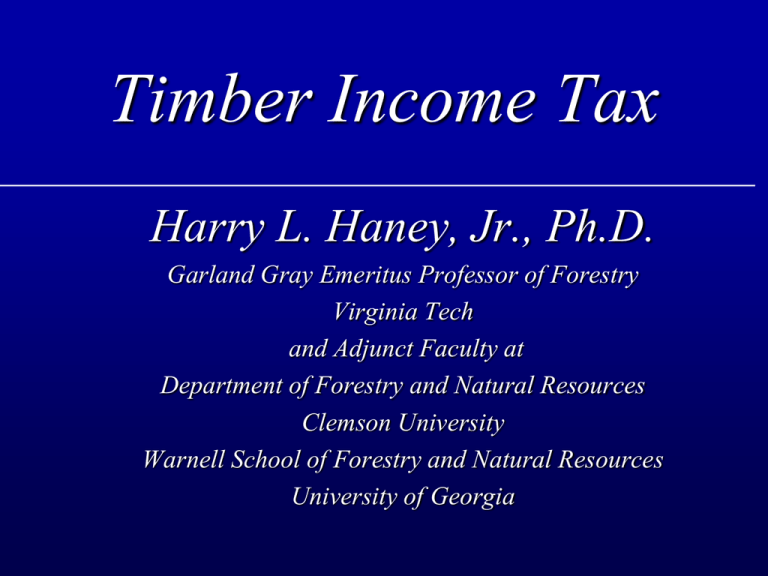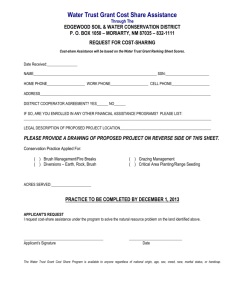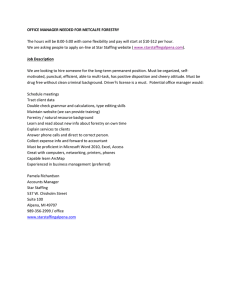Timber Income Tax Harry L. Haney, Jr., Ph.D.
advertisement

Timber Income Tax
Harry L. Haney, Jr., Ph.D.
Garland Gray Emeritus Professor of Forestry
Virginia Tech
and Adjunct Faculty at
Department of Forestry and Natural Resources
Clemson University
Warnell School of Forestry and Natural Resources
University of Georgia
Forestry Cost-share Payments
Chapter 6
Forestry Cost-share Payments
• An exclusion from gross income under IRC §
126 is provided for cost-share payments under
various federal and state programs
• Timber owners should check with the NRCS,
FSA, State Forestry Agency or Extension
Service to discover which programs are
currently available and funded. Such programs
are constantly being modified.
• Begins on p 6.1
Applicability of IRC § 126
•
Two administrative actions are required for
§ 126 to apply
1)
2)
•
•
Secretary of Agriculture must determine that
payments are for conservation or a related
environmental purpose, and
The Treasury Secretary must determine that they
do not substantially increase annual income to
recipient from the property
No rent or compensation for services allowed
Begins on p 6.1
Reporting Cost-share Payments
•
•
Taxpayers have 2 options for reporting
1) Include in income – pay income and social
security tax; the amount qualifies for
expensing up to $10,000 annual limitation
on each QTP; excess may be amortized
2) Exclude all or part by including a statement
showing – cost of reforestation, amount of
cost-share, date received, payment purpose,
exclusion and how exclusion determined
See p 6.2
What Can Be Excluded?
•
•
Excludable amount is the greater of present
value of the “right to receive” annual income
from the affected acreage of two (2) amounts:
1) 10% of the average annual income from the
affected property for the 3 open tax years
2) Or, $2.50 per acre times the number of
affected acres
See p 6.2
Calculation Of Exclusion
• IRS Regulations do not specify the method,
• But, the procedure for valuing farms and forests
in IRC § 2032A is tacitly accepted by IRS
• Annual income is divided by applicable Farm
Credit (formerly Federal Land Bank) interest
rate; see IRS revenue ruling for applicable rates
that are issued annually
• Because annual payment are real (net of
inflation), discount rate should also be real
• See p 6.3
A Cost-share Example
• 100 acres is reforested for $15,000; Federal costshare is $5,000, taxpayer harvested $30,000 in 3
open tax years, FCB interest rate = 6%
• With timber income, the excludable portion is
$16,667 {[($30,000 ÷ 3)(.10)] ÷ 0.06}
• Without income, the excludable portion becomes
$4,167 [(100 acres x $2.50) ÷ 0.06] – $10,000 is
expensed, the remaining $833 must be amortized
• See p 6.3
Cost-share/Tax Interactions
• Excluded amounts may not be deducted,
amortized, depreciated, or depleted
• Amounts spent on property created with cost-share
are recaptured as ordinary income if disposed of
before 20 years. Recapture is reduced by 10% per
year after 10 years
• Generally, taxpayer gains benefits from exclusion
by holding down AGI and potential for taxes
exceeding available deductions from inclusion.
• Begins on p 6.3


